 |
 |
||||||||||||||
| features A Tough Pond to Fish House of Israel The Kindness of Animals To Better Society A Life in Shoes think tankplanet tufts newswire the big day departments |
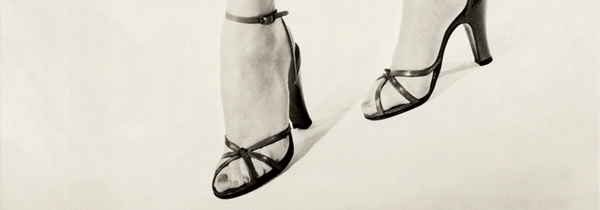
A Life in Shoes
The “naked look” is just one of Mabel Julianelli’s contributions to the annals of fashion footwear
Growing up, I always knew that my mother was a trailblazer in high-fashion shoe design. But it wasn't until I began research on my book about her life and career that I realized how legendary her designs actually were.
Mabel Julianelli, female and Jewish in a male-dominated industry during anti-Semitic times, set up her own design and manufacturing business, Mabel Winkel & Company, in 1929. She defied convention again by marrying an Italian Catholic immigrant, Charles Julianelli—my father. Together they started Julianelli Inc., which turned out an endless succession of eye-catching, finely crafted, and comfortable shoes. The firm pioneered the “naked look” (the barest of shoes made of infinitesimal strips of leather or fabric), introduced the cork clog and the ballet street shoe, and brought back the Chopine, the sandal with an inner soft-leather sock. In 1950 Mabel and Charles won the Coty Award for craftsmanship and artistry. The recognition brought them not only the esteem of the fashion world and New York society but also the admiration of Long Island abstract expressionist painters like Jackson Pollack and Willem de Kooning, with whom they became friends.
My mother died in 1994, at the age of eighty-five, in what looked to me like relative obscurity. Long a widow, she had sold her trade name to another firm years earlier. Then, as I began work on The Naked Shoe: The Artistry of Mabel Julianelli, I discovered that her artistic legacy is alive and well. Great New York institutions—the Metropolitan Museum of Art, the Museum of Modern Art, the Fashion Institute of Technology, and Parsons The New School For Design—all have Julianelli shoes in their permanent collections. Modern shoe companies like Jimmy Choo Limited, Nike, and Skechers constantly look up old Julianelli design patents for inspiration. And a burgeoning movement of vintage fashion sellers have been buying up Julianelli shoes from estate sales and selling them online. Today, I can honestly say that the artistry of Mabel Julianelli marches on.
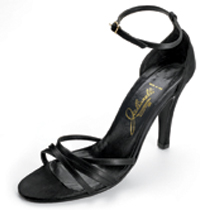 The diaphanous sandals (above) are part of the Coty Award–winning “naked look” collection of 1950. The variation known as the Circe (right) has an ankle strap on a raised back. Mabel always wore hers with a Norman Norell outfit. |
1930s — 1940s
My parents, Mabel and Charles, were incorporated as Julianelli Inc. in 1939, the same year they married at The Breakers in Palm Beach. Their shoes were soon selling at Saks Fifth Avenue, at first under the Saks label and then under the Julianelli brand name. The original Chopine sandal appeared in Vogue in 1941. During the war years, Mabel gave advice to women on ABC Radio and in the Philadelphia Inquirer and the Boston Globe.
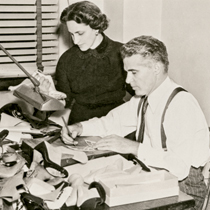
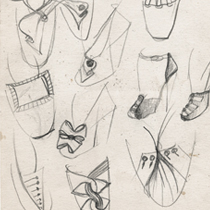
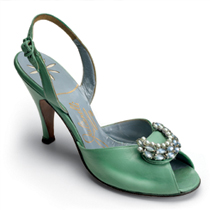 The Julianellis (top right) were the closest of collaborators, she producing the designs, he working out the construction. Mabel had a genius for adding just the right buckle, bow, or ornament, samples of which she sketched in 1938 (middle). The overlay embellishment on her 1940 Mae West sandal (bottom)—a triple semi-ring of pearls and blue beads on a halter sling—makes the shoe. |
1950s
1950s
ushering in the “naked look,” the Julianellis’ evening sandals—which,
thanks to Dad’s ingenious construction techniques, were so light and airy you
wondered how they stayed on the foot—won the Coty Award for craftsmanship and
artistry. The company went national, persuading all the biggest department stores
to pick up the brand. Throughout it all, Mom was a loving and attentive parent
to me, her only child.
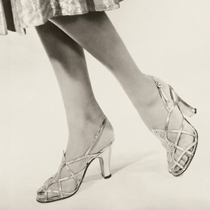
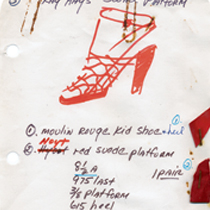
The Thread sandal (top right) has the same graceful feel as the Swirl platform (sketched below right, with leather swatches attached), designed exclusively for Vogue in 1959. |
1960s
Mom inspired the brightest couturiers of the day, including Chester Weinberg and Donald Brooks, to design dresses to go with her shoes. She hosted lunches for designers, editors, and buyers at the Algonquin Hotel in New York, and after my father died, in 1962, she carried on the business, remaining a revered member of the fashion industry. One of the hallmarks of her style was comfort—even in stiletto heels, for which she chose soft-as-butter leather and fabric.
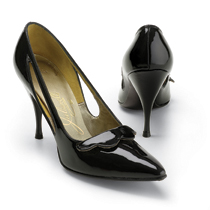
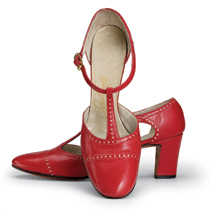
The black stiletto pair—the Contessa (top right), with scalloped tongue, tapered toe, and needle-slim heel—dates from 1960. The little red T-strap (below right) was originally designed for the Empire look in the forties but was revised for the sixties. |
1970s
The shoe fashion was chunky and clunky, but Mabel Julianelli bucked the trend by refining the toe and heel and dressing the shoe with laces and original ornaments. She adapted her designs to current fashions—whether hot pants or peasant dresses—but never lost her sense of originality. During this period, she made many public appearances across the country, even though she missed appearing as a duo with my father.
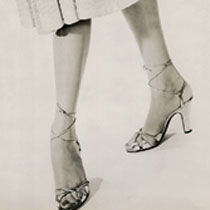
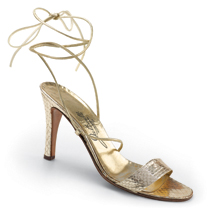
The slim-heel ankle-tie sandal, a Julianelli classic (the Award is shown top), made a comeback in the 1970s (bottom right), thanks to its popularity among ballroom dancers. |
1980s
My mom continued to travel for business, flying to Europe and taking the train throughout the United States. Her signatures of the time were her tailored “tuxedo” flat, her menswear-inspired collection, and, at the other end of the spectrum, her updated versions of the naked sandal that had exploded on the fashion scene in the 1950s. She designed many boots, even cowboy boots, with her own urbane style.
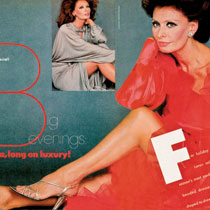
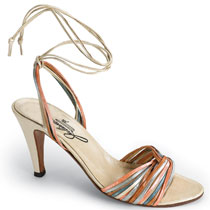
The start of the decade brought this Julianelli evening sandal, a tracery of delicate confetti strips twisted on the vamp and at the halter, ankle-tied. Julianelli shoes graced the feet of top models and actresses, among them Raquel Welch and Sophia Loren (shown top right in a 1982 Harper’s Bazaar ad). |
|
JANE JULIANELLI, J68, a former editor at Women’s Wear Daily, has written for the New York Times, the Daily News, Harper’s Bazaar, Mademoiselle, and Ms. magazine. Her book about her mother’s pioneering work in the fashion industry, The Naked Shoe: The Artistry of Mabel Julianelli (ACC Editions), was published in November. |